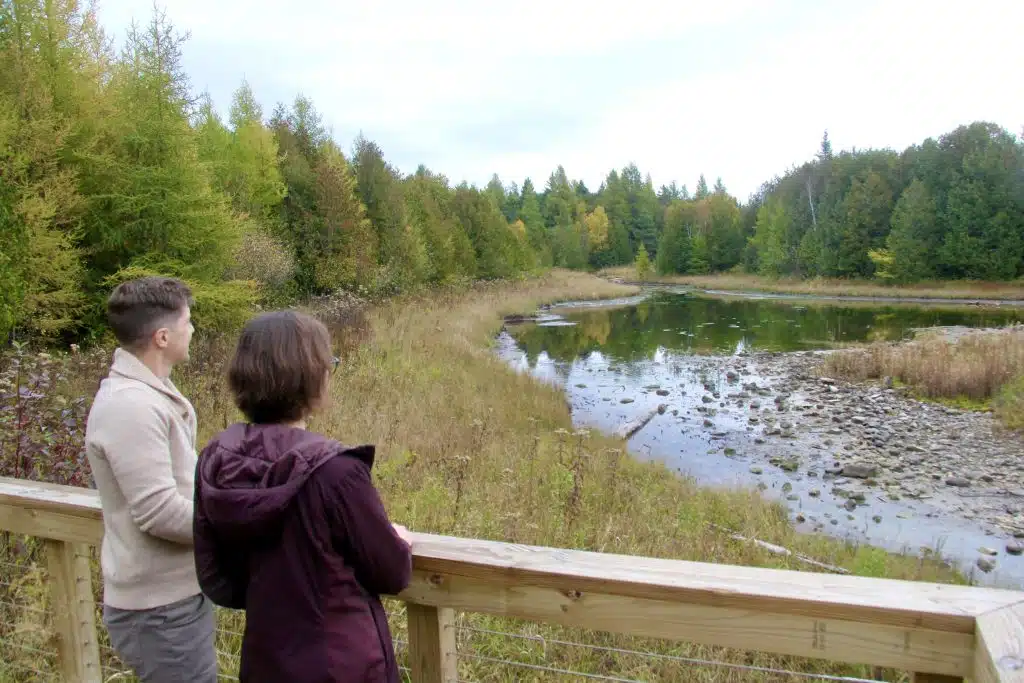Three Springs Nature Preserve: A Native Forest for Breeding Birds
With pine needles underfoot, and silvery raindrops clinging to flat cedar needles and spider webs, the walk along the forested path of Three Springs Nature Preserve gains a soundtrack with the calls and trills of Pine Warblers, American Crows, and Purple Finch. Further exploration of the preserve demonstrates why there is an avian chorus: The native forest habitat is a conservation target that caters to breeding birds.
As the trail continues, more environmental conditions support these birds’ well-being. The path opens onto an expansive field of grasses and shrubs, continues through a plantation of towering pines, then comes to a clearing that reveals the rustic remnants of a former 1883 homestead. But at 515 acres, there is more to this preserve. The trail has a dramatic finish—a view of wetlands and springs that empty into a pond that reflects the surrounding landscape.
Here, at the southern-most point of the northern hemisphere’s boreal forest (a cool, damp forest that ranges from the Arctic Circle through Door County), native forests sustain many wildlife and plant species. The Purple Finch is one of many species of breeding birds that call the preserve its year-round home. Purple Finch populations decreased by 32% between 1966 and 2019 due to habitat loss through development and competition with the look-alike House Finch. The protection of native forests is crucial to their survival.
In summer, Purple Finches favor boreal forests or mixed forests that are along wooded streams. In winter, their habitat expands to include shrubby areas, weedy fields, and hedgerows.
Purple Finch nests can be spotted far out on the limb of a coniferous or hardwood tree with an overhanging branch for shelter. Nests range from 2.5 feet up to 60 feet off the ground. This preserve’s trees provide Purple Finches with their preferred, high treetop vantage point to stage their warbling song.
Three Springs offers a bountiful banquet for Purple Finches. Their diet includes seeds of coniferous and deciduous trees, soft buds, nectar, berries, and fruit. In winter, you may see Purple Finches eating the seeds of low plants like dandelions. They eat some insects, including aphids, caterpillars, grasshoppers, and beetles.
Like many of the Land Trust’s nature preserves, Three Springs contains several conservation target habitats. Three Springs’ wetlands protect many rare and endangered plants and animals, and they have a direct effect on the quality of the land and waters downstream. Even the homestead’s timber and limestone barn serves an important environmental purpose— it’s a maternity roost for little brown bats.The preserve lies within 11,400 acres of land protected by Door County conservation partners. Named by the International Ramsar Convention on Wetlands as the “Door Peninsula Coastal Wetlands,” it is recognized by conservationists for its outstanding ecological qualities of global importance.


